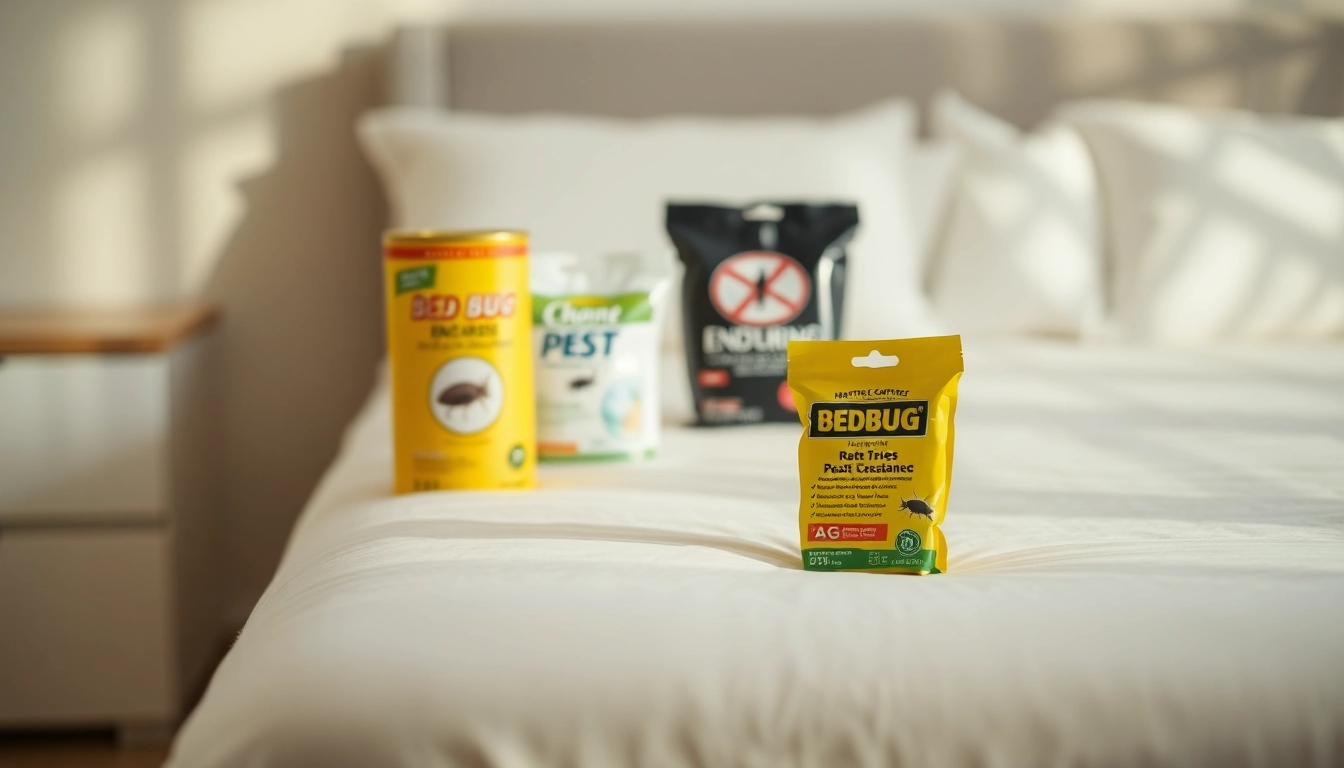Understanding Bed Bugs and Their Habits
What are Bed Bugs?
Bed bugs are small, elusive insects belonging to the Cimicidae family, primarily known for feeding on the blood of humans and other warm-blooded hosts. The scientific name for the common bed bug is Cimex lectularius. These pests are typically brown, oval, and flat, making it easy for them to hide in small crevices and seams of mattresses, furniture, and other household items. Adult bed bugs can measure about 4 to 5 mm in length and can survive for several months without feeding, making them particularly challenging to eradicate.
How Bed Bugs Spread
Bed bugs primarily spread through human activities, hitching rides on clothes, luggage, and even used furniture. They can easily move between rooms in multi-unit buildings such as apartments or hotels, contributing to their rapid spread. Bed bugs are nocturnal, emerging at night to feed, which allows them to go unnoticed for long periods. Their ability to lay up to five eggs per day also exacerbates their presence, leading to substantial infestations if left unchecked.
Signs of a Bed Bug Infestation
Identifying a bed bug infestation early on is crucial in preventing it from escalating. Common signs include:
- Bitten Skin: Small, red, itchy welts that appear in lines or clusters.
- Spotting: Rusty-colored spots on bedding or furniture, which are blood stains from crushed bugs.
- Shells: Shed skins from bed bugs as they mature.
- Odor: A musty smell due to the aggregation pheromones released by bed bugs.
Essential Steps for Bed Bug Control
Preparing for Extermination Methods
Proper preparation is essential before commencing any bed bug extermination methods. Start by decluttering your space to eliminate potential hiding spots. Clear bedding and clothing that may be infested and place them in hot dryers. Vacuuming your home thoroughly helps to remove not only the bugs themselves but also their eggs and cast skins. Ensure to dispose of the vacuum contents immediately to prevent any chance of re-infestation.
DIY Bed Bug Control Techniques
There are several effective do-it-yourself strategies that can complement professional treatments:
- Heat Treatment: Bed bugs can’t survive high temperatures, so placing infested items in a hot dryer or steam cleaning can eliminate them.
- Freeze Treatment: For smaller items, placing them in a freezer at 0°F (-18°C) for at least four days can effectively kill bed bugs.
- Pheromone Traps: Using traps that attract and catch bed bugs can help monitor and control the situation.
When to Seek Professional Help
Despite the effectiveness of DIY methods, some infestations are too extensive for homeowners to manage alone. If you’re experiencing persistent bites or seeing significant signs of infestation after trying home remedies, it’s time to call professionals. Exterminators use a combination of treatments that are typically more effective than any single method a homeowner may use. Their expertise in identifying hiding spots and employing a suite of treatment options ensures better results.
Effective Chemical Treatments for Bed Bugs
Types of Pesticides Approved for Bed Bug Control
When addressing bed bugs, several approved pesticides are effective. Some common categories include:
- Pyrethroids: Synthetic versions of natural pyrethrins, effective against many insects but sometimes less so against pyrethroid-resistant bed bugs.
- Neonicotinoids: Affect the nervous system of insects, providing a viable option against resistant populations.
- Insect Growth Regulators: These disrupt the life cycle of bed bugs and can be highly effective when used alongside extermination efforts.
Safety Practices with Chemical Usage
While chemical treatments are effective, they must be applied safely:
- Always follow the label instructions and manufacturer guidelines.
- Ensure proper ventilation when using aerosols or sprays.
- Keep children and pets away from treated areas until they are declared safe.
Understanding Integrated Pest Management
Integrated Pest Management (IPM) is a holistic approach that combines various strategies to manage pests effectively. By integrating biological control, cultural practices, habitat manipulation, and chemical treatments, IPM seeks to minimize the overall impact on health and the environment. An effective IPM plan for bed bugs includes regular inspections, categorizing infestation severity, using a combination of DIY approaches and professional treatments, and ongoing monitoring.
Preventing Future Bed Bug Infestations
Home Maintenance Tips
To keep bed bugs from returning, incorporate these proactive strategies into your home maintenance routine:
- Decluttering: Regularly clear out unnecessary items that could serve as hiding places.
- Sealing Cracks and Crevices: Use caulk to seal gaps in walls, baseboards, and furniture to reduce potential hiding spots.
- Bed Bug Proofing: Invest in encasements for mattresses and box springs to create a barrier against infestations.
Traveling Safely to Avoid Bed Bugs
Traveling increases the risk of unknowingly bringing home bed bugs. Here are essential travel tips:
- Inspect hotel rooms upon arrival; check seams of mattresses, behind headboards, and around furniture.
- Store luggage on elevated surfaces like luggage racks rather than on the bed or floor.
- When returning home, wash all clothing and luggage at high temperature to eliminate any pests that may have traveled with you.
Regular Inspections and Monitoring
Routine inspections and monitoring can provide an early warning for bed bug re-infestations. Consider implementing these practices:
- Regularly check high-risk areas, including around beds, furniture, and luggage storage locations.
- Utilize bed bug monitors or detection devices to help catch infestations early.
Evaluating the Success of Bed Bug Control Efforts
Signs of Successful Treatment
After treatment, it’s essential to monitor for signs that indicate its success:
- Reduction in bites or sightings of bed bugs.
- Fewer signs of eggs, shells, or physical bugs in bedding and furniture.
- No musty odors characteristic of bed bug pheromones.
Common Mistakes to Avoid
Even after treatment, some common pitfalls can lead to a resurgence:
- Failing to treat all areas where bed bugs may be hiding, like couches, carpets, and adjacent rooms.
- Relying solely on chemical treatments without incorporating other strategies like vacuuming and heat treatments.
- Not following up with professional monitoring and inspections.
Long-term Maintenance Strategies
To maintain bed bug-free status over the long term, consider adopting these strategies:
- Schedule periodic pest control inspections, especially after travel or significant guests in your home.
- Educate family members about effective bug detection and prevention measures.
- Stay informed on the latest bed bug news and community reports to be proactive in your prevention efforts.
Implementing robust bed bug control measures takes diligence and commitment. By understanding these pests, employing multifaceted approaches to control, and maintaining consistent preventive measures, householders can keep their living spaces comfortable and bed bug-free. For more comprehensive strategies on Bed Bug Control, consider consulting with a pest management professional.



